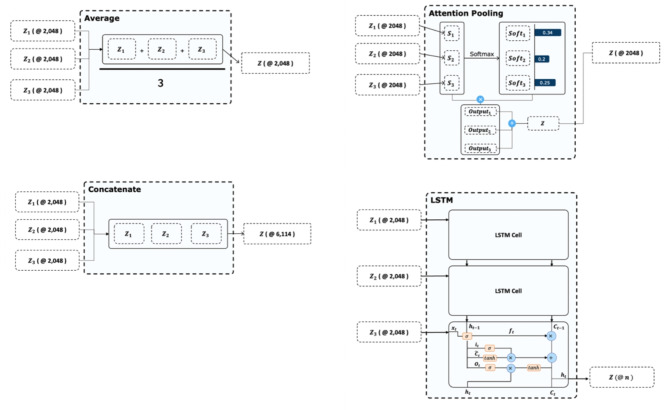Fig. 2.
Optical coherence tomography (OCT) record encoder. The architecture of the proposed model, which comprises several dense blocks that contain multiple convolutional layers with dense connectivity, is illustrated. Specifically, each layer within the same dense block is connected to every other layer, resulting in a highly connected network. Following each dense block, a transition layer performs spatial compression of the feature maps by applying batch normalization, ReLU activation, a 1 × 1 convolution layer, and a 2 × 2 average pooling layer. The output of the last dense block is fed into a global average pooling layer, which aggregates the feature maps and produces a fixed-size representation of the input data. This representation serves as a latent variable Z for next layer.

